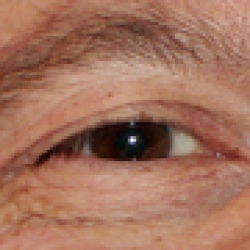Home > Topics > Equipment & Techniques > Computers & Displays > BenQ and PME calibration question….
BenQ and PME calibration question….
Tagged: BenQ
-
AuthorTopic: BenQ and PME calibration question…. Read 1087 Times
-
Computers & Displayson: July 25, 2020 at 2:44 pm
Hi all
I recently treated myself to the BenQ SW270C (probably the last monitor I will buy….as the years are advancing for me 😉 )
Though I have nothing else to judge it by IMO it is an excellent monitor for my needs 🙂
I went through the Pallete Master Elements calibration and Hardware Calibrated it to my editing prefered setting with Luminance of 90cd/m2. But the joy of this monitor is that with the click of a button I have aRGB and sRGB presets for viewing and or general usage.
Now in a post I put in a thread of at DP Review forum one responder raised (if I understood his answer right?) that as well as hardware calibrating, the same profile needs to be put into Windows Colour Management.
The thread is here https://www.dpreview.com/forums/thread/4500737#forum-post-64188056
As I say in that thread, I need to read & re-read what that poster has said…………….but something at its core, based on my clearly limited understanding, just seems odd!
Therefore, I turn to the folk I know who would most likely have the lo-down on this and let me know if ‘he’ is right and/or where I have misunderstood the whole matter of setting up my SW270C???
TIA for the insights and feedback 🙂
-
This topic was modified 4 years, 1 month ago by
 L Berle.
L Berle.
Re: BenQ and PME calibration question….Reply #1 on: July 28, 2020 at 1:32 pmI can’t comment on Windows or Palette Master but the software SHOULD be updating the calibration AND loading the associated ICC profile it built in your system. That’s why my SpectraView does on Mac OS (and I’m pretty sure, Windows OS). So yes, do a switch, then examine where in Windows it shows the currently loaded ICC profile, it must match!
FWIW, if you calibrate to 90cd/m2, you’re not really getting either sRGB or Adobe RGB (1998) (the sRGB spec calls for 80cd/m2).
Author “Color Management for Photographers" & "Photoshop CC Color Management" (pluralsight.com)”
Re: BenQ and PME calibration question….Reply #2 on: July 28, 2020 at 8:29 pmI can’t comment on Windows or Palette Master but the software SHOULD be updating the calibration AND loading the associated ICC profile it built in your system. That’s why my SpectraView does on Mac OS (and I’m pretty sure, Windows OS). So yes, do a switch, then examine where in Windows it shows the currently loaded ICC profile, it must match!
FWIW, if you calibrate to 90cd/m2, you’re not really getting either sRGB or Adobe RGB (1998) (the sRGB spec calls for 80cd/m2).
Hi Andrew
Thanks for the insights.
I have since done a factory reset and will be doing my recalibrations ( there are 3 custom ones available to save to) as appropriate.
Your comment re: 80cd/m2 being the part of the sRGB reference standard I did not know so looked it up and I see that dates back to the days of CRT displays……………it has been a very long while since I used CRT’s but back then I was not doing digital photography. In fact most of the work I did was on green phospher CRTs….now I do feel old 😆
I also learned that AdobeRGB has a reference Luminance of 160cd/m2
Neither of those levels would give me a screen to print match for print appearance ~ at 80cd/m2 my prints would look too light and 160cd/m2 they would be way too dark. Yes, I am saying that I found that 90cd/m2 gave me commercially print Giclee that looked right compared to my then Dell 2209WA that was calibrated to 90cd/m2. (NB other than a few 6×4 reference prints I do not print at home.
So, I am unsure how relevant the reference Luminance figures are when it comes to ‘matching’ screen to prints. Afteral, the received wisdom(?) is that screen Luminance for printing should be between 80 – 100cd/m2………………..I could of course have completely misunderstood and have just spouted poppycock??? But all the prints I have done in the past few years looked like my screen images. NB those were all done on an sRGB software calibrated monitor and outputted for with sRGB profiles as that is what the lab required.
I still need to understand that where the screen is hardware calibrated, what is the role of the saved profiles when listed in Windows Colour Management under Device Associations (the current default is the Profile installed when the Monitor was installed i.e. not a calibrated profile) and as such why if the monitor is (as mentioned) Hardware Calibrated why & what is the purpose of those saved to Windows profiles, as the responder in the DP Review discussion thread seemed to explicitly say that needed to be done and made the default. Same caveat as above applies 😉
Re: BenQ and PME calibration question….Reply #3 on: July 28, 2020 at 8:36 pmIf you change the cd/m2 from the spec, it’s not sRGB (or Adobe RGB (1998)) any longer and that’s fine. The color gamut of sRGB is only one attribute of what makes it sRGB. You can and should use whatever cd/m2 value you need to match a print if that’s your goal, same with the white point. Or contrast ratio. But again, anything that deviates from the spec makes whatever you’ve produced different from the original defined color space.
Author “Color Management for Photographers" & "Photoshop CC Color Management" (pluralsight.com)”
Re: BenQ and PME calibration question….Reply #4 on: December 16, 2020 at 11:40 pmThe Benq SW series comes with the backlight brightness set at 100%, equaling 150 nits. It can be turned down, but left alone would closely represent Adobe RGB.
You can reduce the cd/m2 (a different setting than the backlight brightness) to be much lower to better compare for printing.
I have the SW2700PT and have been experiminting with the 2 settings to better work with prints.
Eliott James Landscape and Seascape Photography www.eliottjames.photography
Re: BenQ and PME calibration question….Reply #5 on: December 17, 2020 at 2:42 pmI’d certainly hope this display can exceed 150 nits (cd/m2).
Anyway, if one wants to produce Adobe RGB (1998) precisely as specified:
https://www.adobe.com/digitalimag/pdfs/AdobeRGB1998.pdf
The luminance level of white displayed on the reference color monitor shall be 160.00 cd/m2The corresponding luminance of the reference display black point is 0.5557 cd/m2.
Author “Color Management for Photographers" & "Photoshop CC Color Management" (pluralsight.com)”
-
This reply was modified 3 years, 8 months ago by
 Andrew Rodney.
Andrew Rodney.
-
This topic was modified 4 years, 1 month ago by
-
AuthorPosts
- You must be logged in to reply to this topic.



